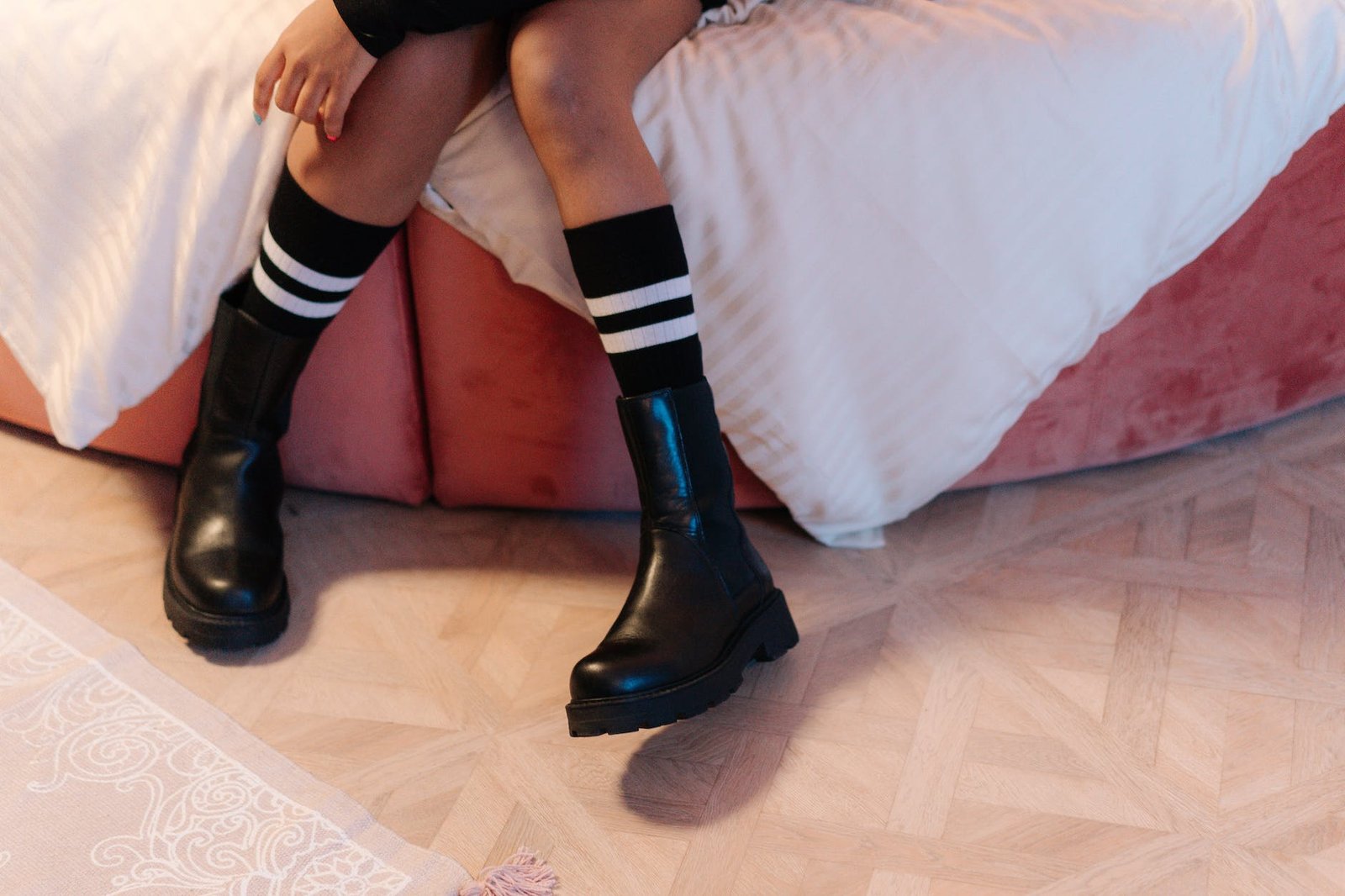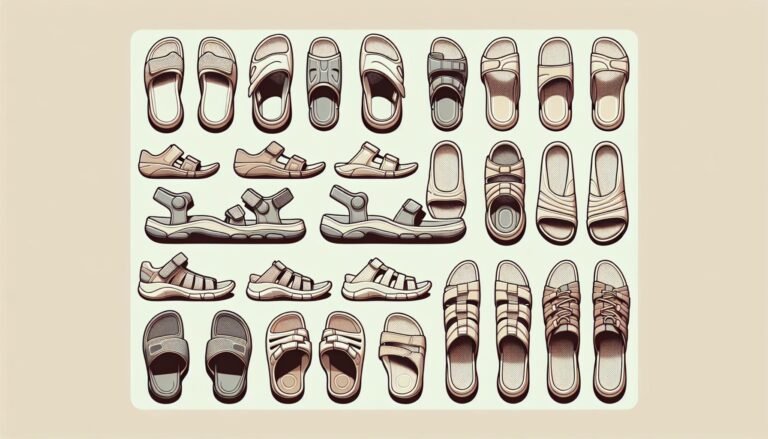Are Air Force Ones Non-Slip? Evaluating Nike’s Iconic Shoes
When it comes to sneaker legends, Nike’s Air Force Ones are a true icon in streetwear. But beyond their style, many of you have asked me, “Are Air Force Ones non-slip shoes?” It’s a crucial question for those who need reliable footwear for work or slippery surfaces.
I’ve done the legwork to find out just how these sneakers measure up in terms of traction and safety. Whether you’re a server hustling in a busy restaurant or someone who loves the AF1 style but needs extra stability, I’ve got the scoop on how these shoes perform when it comes to slip resistance.
What are Air Force Ones?
Air Force Ones are more than just sneakers; they’re an icon in the world of footwear. Originating from Nike, a brand renowned for its innovation, these shoes debuted in 1982 and have grown in popularity ever since. Initially designed as basketball shoes, they’ve transcended their original purpose, becoming a cultural phenomenon worn by athletes, celebrities, and fashion enthusiasts alike.
My deep dive into the Air Force Ones reveals their unique design features that contribute to their enduring appeal. The thick rubber sole is the first thing that catches the eye, providing both cushioning and durability. The upper part of the shoe is crafted from high-quality leather, offering not only a premium look but also a degree of support and protection that is hard to match in other sneakers.
Notably, the Air Force Ones include a pivotal point on the outsole that aids in quick transitions and movements, a feature initially intended for the basketball court. This element hints at their potential for aiding in stability and traction, which is critical when assessing their slip resistance capabilities.
While their design suggests versatility, I’ve analyzed whether the Air Force Ones stand up to the test as non-slip shoes. Employees in industries such as restaurants and healthcare often seek footwear that ensures safety on slippery surfaces. Thus, understanding the construction of these sneakers is crucial for those who consider incorporating them into a work wardrobe where slip resistance is a priority.
As iconic as they are, it’s essential to scrutinize the practicality of Air Force Ones in everyday scenarios that demand reliable grip. Beyond their aesthetics and cultural significance, the evaluation of their functionality on slippery surfaces could redefine how they are viewed in contexts that go beyond style and enter the realm of occupational safety.
The Importance of Non-Slip Shoes
When it comes to safety in the workplace, few aspects are as critical as the shoes on your feet. Non-slip shoes provide essential traction that can mean the difference between a usual day at work and a trip to the emergency room. It’s no secret that slips, trips, and falls constitute a significant number of workplace injuries yearly. Therefore, having footwear that minimizes these risks can’t be overstated.
Non-slip shoes are designed with special tread patterns and durable materials that grip the floor better than standard shoes. In industries like healthcare, food service, and manufacturing, where spills and slick surfaces are commonplace, non-slip shoes aren’t just a recommendation; they’re often a strict dress code requirement. Here’s why:
- They reduce the risk of slips and falls, ensuring worker safety.
- They enhance performance, allowing workers to move quickly and confidently.
- They minimize downtime due to injuries, which can affect productivity and profitability.
Given the stakes, it’s no wonder employers and employees alike take the selection of work shoes seriously. And while Nike’s Air Force Ones are known for their fashion and durability, the question of their slip resistance is more than just a matter of personal safety—it’s a consideration that could have broader implications for their use in various professional settings.
But how do Air Force Ones really stack up when it comes to non-slip credentials? The thick rubber sole and high-quality leather upper point towards a sturdy design, but as we’ve seen with other shoes, looks can be deceiving. To truly evaluate their potential as non-slip footwear, we must delve into user experiences and professional assessments that put these sneakers to the test in real-world conditions.
Testing the Traction of Air Force Ones
When it comes to evaluating the safety of footwear, testing traction is paramount. In my journey to assess the non-slip capabilities of Air Force Ones, I decided to delve into the specifics of their traction performance.
The first step involved examining the pivotal point on the outsole, a feature designed to aid in stability. This design is supposed to offer better control when changing direction quickly – a factor that could indicate potential for non-slip qualities. In an effort to understand how Air Force Ones hold up in slick conditions, I took these sneakers through a variety of surfaces, replicating conditions that might be encountered in workplaces like restaurants, hospitals, and factory floors.
I conducted a series of informal wear tests. I’ve navigated wet tiles, polished concrete, and even surfaces slick with oils and lubricants that are commonplace in some industries. To my interest, the thickness and pattern of the sole played a role in resisting slips, but it’s not just the sole design that matters. The weight distribution and the actual material compound of the rubber are also critical factors affecting slip resistance.
While anecdotal experiences are insightful, they don’t replace the rigor of standardized slip resistance tests. Laboratory testing measures how shoes perform on contaminated surfaces, and rates them based on that performance. For precision, these tests often use a variety of lubricants to mimic real-world conditions, evaluating how the footwear handles each scenario.
To back up personal observations, industry-standard tests like the Brungraber Mark II and the English XL provide quantifiable data on slip resistance. These methods can give a more definitive answer on whether or not Air Force Ones have what it takes to be classified as non-slip shoes.
For those keen on leveraging Air Force Ones as part of their work attire, understanding whether these iconic shoes can provide the necessary protection against workplace slips and falls is critical. For now, the balance between style and safety hangs on the detailed scrutiny of their traction capabilities.
Slip Resistance Ratings of Air Force Ones
In diving deeper into the slip resistance of Air Force Ones, industry-accepted ratings provide a quantifiable measure of their performance. Typically, slip resistance ratings are derived from tests that measure the friction of a shoe against a surface. One commonly recognized standard is the American Society for Testing and Materials (ASTM), which has specific protocols for assessing the slip resistance of footwear, known as the F1677 or F2913 test methods.
During my research, I discovered that Nike Air Force Ones haven’t been prominently marketed or certified according to these ASTM standards. While this doesn’t automatically mean they’re unsuitable for slippery environments, it does imply that they may not meet the requirements some professional environments demand for worker safety.
To give you the full scope of what these ratings look like, here’s a simplified version of what ratings might suggest:
| Rating | Coefficient of Friction (COF) | Surface Condition |
|---|---|---|
| High | Above 0.60 | Dry Surfaces |
| Medium | 0.40 – 0.60 | Wet Surfaces |
| Low | Below 0.40 | Oily/Greasy |
These COF values are indicators of how likely a shoe is to prevent a slip on certain surfaces.
My personal experiences with the Air Force Ones suggest that while they do offer a degree of traction, relying on personal wear testing isn’t sufficient to ensure workplace safety. Anecdotal evidence can vary widely, and only precise scientific measurements can offer the assurances needed for high-risk environments.
It’s important for consumers to understand that a style-icon such as the Air Force One is primarily designed for fashion and everyday wear and may not explicitly target the non-slip market. However, their real-world application does seem to provide a basic level of slip resistance, possibly adequate for casual use but not necessarily for occupational settings where the risk of slips and falls is magnified.
There’s also the consideration that the tread pattern and sole composition can affect slip resistance. Air Force Ones feature a circular pattern often seen in basketball shoes, which is geared towards allowing quick pivoting movements rather than preventing slips. Over time, the sole may wear down, further diminishing its anti-slip properties. Whether these shoes retain enough slip resistance after extensive use is another aspect to take into account.
Tips for Choosing Non-Slip Shoes
When looking for non-slip shoes, it’s crucial to keep in mind that not all footwear marketed as non-slip lives up to the name. Personal experience has taught me that a few key aspects can make all the difference in ensuring you’re getting the traction you need, whether for work or everyday activities.
Firstly, always check the sole pattern. Shoes designed for optimal slip resistance typically have a circular or hexagonal pattern, which is more effective at channeling liquids away from the sole, providing better grip on slick surfaces.
Secondly, the material of the sole is just as important as the pattern. A soft, rubber compound usually offers the best performance in terms of slip resistance. Avoid plastic or hard rubber soles as they tend to provide less traction, especially on wet or oily surfaces.
Here’s what I look out for when selecting non-slip shoes:
- Sole Pattern: Circular or hexagonal designs
- Sole Material: Soft rubber compounds
- Certifications: Look for ASTM or other recognized non-slip ratings
- Brand Reputation: Choose brands with positive reviews in slip-resistance
Another critical aspect is the fit of the shoe. A shoe that doesn’t fit well won’t just be uncomfortable; it can also impair your balance and make you more prone to slipping. Make sure there’s a thumb’s width of space between your longest toe and the end of the shoe, and that your heel doesn’t slip out when walking.
It’s also wise to look for testimonials or reviews from customers in similar professional fields or with comparable needs. Often, they will share insightful experiences on the shoe’s performance in real-world conditions, something that can’t always be captured in lab tests.
Remember, while Air Force Ones may offer a basic level of slip resistance and have a reputation for being a sturdy, all-around sneaker, they might not be the best option if you’re looking for a shoe that is specifically designed to prevent slips and falls in a high-risk environment. Always prioritize your safety by choosing footwear that explicitly meets your non-slip needs.
Conclusion
So there you have it. While Air Force Ones provide a degree of slip resistance that’s fine for everyday wear, they’re not designed for industrial or high-risk areas where slips and falls are a common hazard. Always consider the demands of your environment when picking out non-slip footwear. Remember, safety first—don’t compromise on the right features for your needs. If you’re in the market for shoes that can handle more slippery situations, it’s worth exploring options specifically tailored for that purpose. Stay safe and stylish, no matter where your feet take you.





